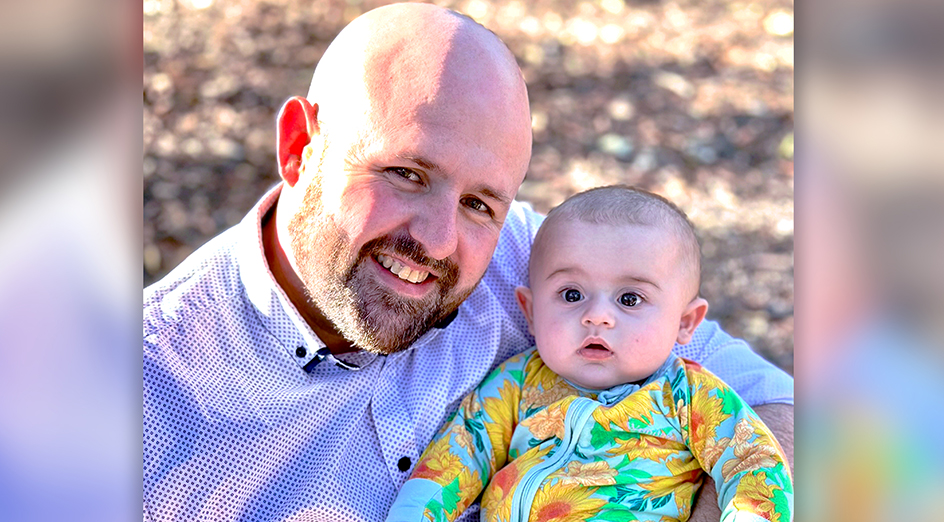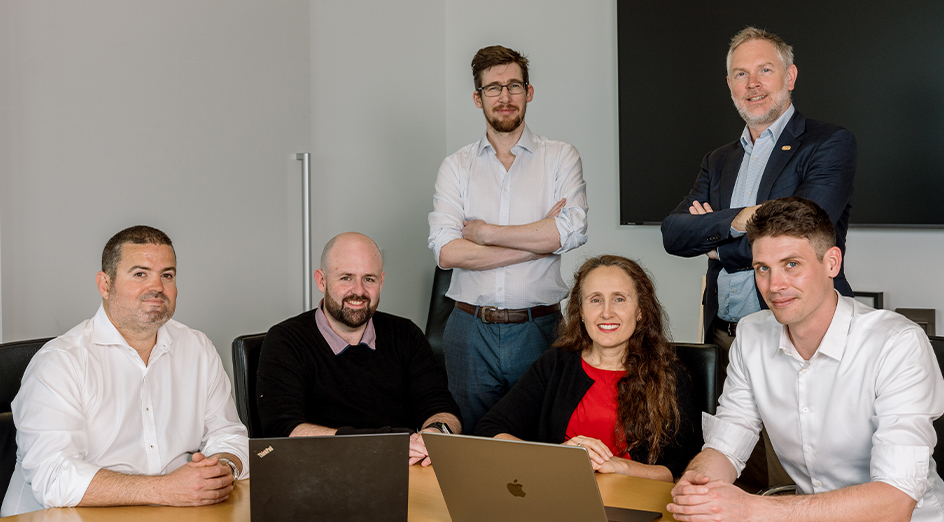Written by Carrie Cox
As the first-time father of a newborn, Dr Kieran Mulroney may well have had no better preparation for the trials of parenthood than his ongoing journey to commercialise a lifesaving medical discovery.
The UWA Forrest Prospect Fellow, together with research colleagues from the UWA Medical School and Harry Perkins Institute of Medical Research, first published their discovery – breakthrough technology that can rapidly diagnose antibiotic resistance – in 2017.
But despite the tremendous significance of those findings – identifying resistance within hours instead of days that may save more than 900,000 lives each year – the team quickly learned that, much like parenthood, giving birth to a miracle is only the beginning.
Naively, you think you make a discovery, you patent it, and the big companies will come knocking, but of course that's not what happens," Dr Mulroney says. "If you want to get that benefit out into the world, you not only have to do the scientific development work, but you also need to do the commercial development work to prove that your tech is amazing and worth putting money behind. Because the simple fact is, if no-one wants to pay for it, it simply won't happen."

Image: Dr Kieran Mulroney and his baby boy Ronan.
Fortunately, the wheels are now turning for Cytophenix, the name Dr Mulroney and his team have given to their baby. In May 2023, national biotechnology incubator CUREator awarded a $500,000 commercialisation accelerator grant to Cytophenix to help bring the technology to clinical use.
CUREator is one of several new funding pathway initiatives designed to turn around Australia's record of research commercialisation, which until very recently was one of the worst in the developed world.
Dr Mulroney says the grant was a major milestone for Cytophenix. "As a scientist, this discovery has been exciting, but to see it translated for the benefit of patients, hopefully within the next three years – that will be deeply rewarding," he says.
"Because personally, I didn't get into research to make discoveries that no-one knows about. For me it was always about making an impact and doing things that help people."
More than 1.29 million people globally die each year from infections that don't readily respond to antibiotics. Another 4.5 million will die indirectly from conditions caused by antibiotic-resistant infections.
It's a calamitous public health problem that is worsening rapidly due to our overuse of antibiotics, not only in medicine but also industry, and current estimates are that 200 million deaths will result from antibiotic-resistant infections by 2050.
"Based on current projections, infection will begin to cause more deaths than any other cause," Dr Mulroney says. "So if we don't move quickly on this front, the bugs are simply going to win. They divide faster than we do, they replicate faster, and their sole purpose is to grow and proliferate.
"If we keep throwing unnecessary drugs at these infections, all we're teaching them is how to get better and how to get past all these interventions. It's why a lot of people around the world, not just us, have been working very hard to solve this problem."
The hurdle common to every research team working in this space is time. For every hour that a patient doesn't receive an effective antibiotic for their specific infection, their risk of death increases by 6.7 percent – yet current testing procedures take two to five days.

Image: The Cytopenix group. Front: Sherief Korshid, Kieran Mulroney, Christine Carson and Teagan Paton. Back: Mike Clark and Russell Nicholls .
"With life-threatening infections, basically, if you don't get the right drug within two days, it's almost guaranteed there is nothing that can be done," Dr Mulroney says. "Getting the right drug early can be the difference between life and death or very serious complications like amputations.
"At the moment, due to the time it takes to isolate infecting bacteria, doctors are simply having to make educated guesses about which drug to use."
When it comes to defeating antibiotic-resistant infections, there is no question of circumventing the testing process – there is only the hope of making it quicker. That's what Dr Mulroney and his colleagues have been able to do with patented technology they've fittingly labelled 'FAST'
Antibiotics are like the fire extinguishers of modern medicine – if a fire takes hold and spreads, it becomes very hard to control, whereas if you get in early with a fire extinguisher, there will still be damage done but you can stop the spread and give time for everything else to get back under control," Dr Mulroney explains.
"What happens at the moment when a patient presents with an infection is that a sample is sent to pathology and you then try to grow the micro-organisms in that sample so that you've got enough of them to work with to run tests," Dr Mulroney explains. "That can take anywhere from two to five days to get a result.
But instead of waiting for the organisms to grow, we're using a piece of high-end research equipment that measures hundreds of thousands of the individual bacteria in seconds. Then, using our AI-driven FAST technology, we can detect the damage that antibiotics will cause to those bacteria and use this information to confirm which antibiotic will be an effective treatment."
FAST (which stands for 'Flow cytometry-assisted Antimicrobial Susceptibility Test') was developed in affiliation with PathWest Laboratory Medicine WA and the WA Country Health Service. The research was done in partnership with the WA Department of Health through Sir Charles Gairdner and Osborne Park Health Care hospitals, and is also supported by the NHMRC.
"FAST is a rapid and accurate test that returns answers on the best antibiotic to prescribe in just three to five hours," Dr Mulroney explains. "And it's a 'one-principle-fits-all' platform, meaning it can essentially be used on all combinations of bacteria, fungi and the antibiotics that treat them.
"Across more than 26,000 individual test results from clinical samples, FAST has demonstrated the levels of real-world accuracy and precision required by regulatory agencies for clinical use. We can predict which antibiotics will be effective to treat that infection with 96.9 per cent accuracy."
While movement in this highly competitive research area is still largely dependent on the whims of market forces and the priorities of potential investors, Dr Mulroney feels confident that Cytophenix is a stand-out proposition.
"If you look at sepsis alone in Australia, there are about 55,000 cases each year," he says, "so if you were able to shave just one day off each one of those cases using this tech, that could save $180 million a year for the Federal Government in terms of the health care costs for those patients.
"There are also the potential benefits in taking the tech out to rural and regional areas where these sorts of infection cases would normally be redirected to city hospitals. Obviously there are huge benefits to people being able to stay in their own communities or on country for their care."
Like any devoted parent, Dr Mulroney is ready to stay the course.
Primary authors on the research findings (2017 and 2021) include Dr Kieran Mulroney, Associate Professor Tim Inglis, Associate Professor Aron Chakera and Dr Christine Carson.
Cytophenix is a partnership between the researchers, UWA and AI firm Three Springs Technology. CUREator is funded by the Federal Government via the CSIRO and administered by Brandon BioCatalyst. FAST is still in research use and not yet registered on the Australian Register of Therapeutic Goods.






